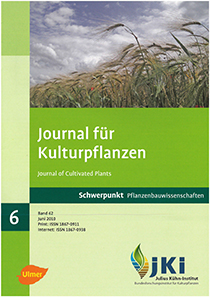Influence of anthropogenic copper pollution on soil microorganisms – an overview. I. Microbial populations
Keywords:
Copper, pesticides, soil, bacteria, fungi, algae, antagonists, biomass, biodiversity, populationsAbstract
The heavy metal copper is an essential trace element, but at higher concentrations it may be toxic to several organisms. Soil contaminations by copper may be due to several sources, e.g. emissions, application of sludge, copper-containing pesticides and fertilizers. Besides few cases where high natural copper contents exist these pollutions may contribute to very high Cu concentrations in soils which persist or even accumulate during many years. In soils used for agriculture, forestry or horticulture – but also in natural ecosystems – the copper pollution nevertheless should guarantee a functional biocenosis and high biodiversity. This especially applies to microorganisms which mainly contribute to biomass, diversity and turnover rates in soil. Until now several hundreds of publications – especially from the last three decades – are available on effects of copper including its chemical substances on soil microorganisms. Therefore, the review presented here concentrates on microbial populations, whereas effects of copper on microbial activities will be presented in a succeeding overview.
In several chapters the influence of copper on the soil microbial biomass and diversity, on common microbial populations, nitrogen-fixing microorganisms and the mycorrhiza, on nematophagous fungi and soil-borne microorganisms antagonistic to phytopathogens as well as entomopathogens against phytophagous insects will be presented by several examples. An additional chapter describes some effects of copper in combination with further pollutants on soil microorganisms. Depending on the multitude of publications great amplitudes of the observed effects of copper exist. Nearly from all presented areas significant influences of low copper concentrations – at practical or even lower dosages – are reported as well as very low effects of very high ones. In addition more or less direct effects of copper-containing pesticides are reported. Obviously some microorganisms may be able to build up copper-tolerant populations due to high or very high copper pollution, which often are accompanied by a decreased microbial diversity in soil. Because the copper content in soil normally persists over a long time and from literature data effects of copper on microbial populations in soil cannot be avoided in many cases we suggest a restrained application of copper-containing pesticides and fertilizers. A final discussion and evaluation of the effects of copper on soil microorganisms should also include microbial activities and, therefore, will be done in a succeeding second part of the review.
DOI: 10.5073/JfK.2010.06.03, https://doi.org/10.5073/JfK.2010.06.03








